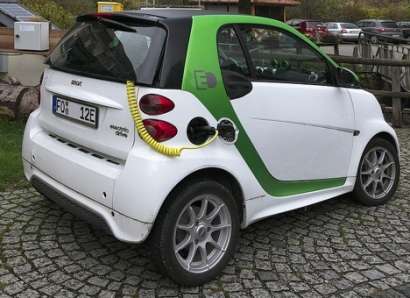
The Electric Highway Coalition – made up of American Electric Power, Dominion Energy, Duke Energy, Entergy Corp., Southern Co., and the Tennessee Valley Authority – announced a plan to provide EV drivers seamless travel across major regions of the country through a network of DC fast chargers for EVs. The companies are each taking steps to provide EV charging solutions within their service territories. This represents an unprecedented effort to offer convenient EV charging options across different company territories and allow EV travel without interruption.
The Edison Electric Institute estimates 18 million EVs will be on U.S. roads by 2030. While many drivers recognize the benefits of driving an EV, such as the ease of low-cost home charging, some are concerned with the availability of charging stations during long road trips. With efforts like the Electric Highway Coalition, electric companies are demonstrating to customers that EVs are a smart choice for driving around town as well as traveling long distances.
This effort will provide drivers with effective, efficient, and convenient charging options that enable long distance EV travel. Sites along major highway routes with easy highway access and amenities for travelers are being considered as coalition members work to determine final charging station locations. Charging stations will provide DC fast chargers that are capable of getting drivers back on the road in approximately 20-30 minutes.
“TVA and the local power companies we serve are focused on being innovative transportation leaders, and we’re pleased to collaborate with neighboring utilities such as American Electric Power, Dominion Energy, Duke Energy, Entergy Corp. and Southern Company on this initiative,” said Jeff Lyash, TVA President and CEO. “Together, we can power the electric road trip of tomorrow by ensuring seamless travel across a large region of the U.S. This is one of many strategic partnerships that TVA is building to increase the number of electric vehicles to well over 200,000 in the Tennessee Valley by 2028.”
Lyash believes that electrifying transportation can spur the same innovative transformation that electrifying the Tennessee Valley did back when TVA was founded. He said, “EV adoption will spur jobs and economic investment in the region, keep refueling dollars in the local economy, reduce the region’s largest source of carbon emissions, and save drivers and businesses money.”
TVA is leading the charge to increase EV adoption in its seven-state service area with the recently announced EV Initiative, which is based on building partnerships with LPCs, state agencies and other organizations. TVA is making investments and coordinating partner funding that could bring up to $40 million in programs to support EV adoption in the next five years. This initiative is a multi-year plan to accelerate the electrification of transportation through programs to reduce or eliminate the market barriers that currently prevent more people from choosing EVs. By addressing the barriers to EV adoption, the anticipated outcome is:
This announcement comes on the heels of the recently announced partnership between TVA and the Tennessee Department of Environment and Conservation to develop and fund a fast charging network across the interstates and major highways of Tennessee. TVA plans to work with state agencies in other states to develop a fast charging network across the Tennessee Valley.
“Tennessee is on the forefront of the electric vehicle revolution thanks to its robust automotive manufacturing sector, supply chain capabilities, its highly trained workforce and its commitment to developing a reliable, fast-charging network,” said TDEC Commissioner David Salyers. “TVA's participation in this coalition is a critical step in ensuring Tennessee’s fast charging network connects regionally and nationally, providing efficient transportation for future travelers while improving air quality in our state.”
The Tennessee Valley Authority is a corporate agency of the United States that provides electricity for business customers and local power companies serving nearly 10 million people in parts of seven southeastern states.


